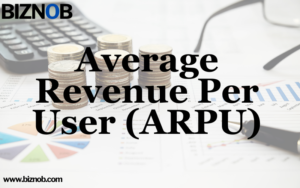An Automatic Bill Payment: What Is It?
An automated bill payment is a periodic payment set up for a predefined date. Regular payments to vendors from a bank, brokerage, or mutual fund account are automatic bill payments.
The firm that receives the money typically sets up automatic payments, but you can also set them up using the online bill payment feature of a checking account. Automated clearing houses (ACH) and other electronic payment systems provide automatic bill payments.
The Process of Automatic Bill Payment
All kinds of payment transactions can be arranged for automatic bill payments. Installment loans, vehicle loans, mortgage loans, credit card bills, cable and power bills, and other bills might all fall under this category. It is pretty simple to automate these payments from a checking account.
Making plans with the bank that holds the checking account to ensure that the precise amount is paid each month is required to set up automated bill payments. The account holder usually creates the set of instructions online. More often than not, the vendor (the utility company, for example) is granted this authority to charge the checking account for the entire amount due that month. In both situations, the person paying the bill has to start the automatic payment process and supply the data needed to set up automatic repeat payments.
Pros:
- Automating payments from a checking account is simple.
- You can prevent late payments by setting up automated bill payments.
- Maintaining or raising your credit score is much easier when you pay automatically and on time every time.
- You do not need to complete the task every month once payments have been established.
Cons:
- An automatic payment may not clear your checking account if you don’t preserve a buffer.
- There might be a late payment or returned payment cost.
- Since the payment is made automatically, you might not notice errors or fraud.
- Canceling automatic payments might be challenging.
An Automated Bill Payment Example
Customers may avoid the inconvenience of constantly forgetting to make a payment by setting up automatic payments. Also, they can assist customers in avoiding late fees.
Let’s say, for instance, that your $300 automobile payment is due on the tenth of each month for the following sixty months. You might agree to have $300 automatically sent from your checking account to the vehicle loan business on the fifth day of each month. Instead of entering into your online account with the auto loan company to plan the same payment every month, you could set up automatic payments once. This will save you the hassle of having to complete the same process every month and ensure that your payment is always made on time. Additionally, you’ll raise or keep your credit score high.
The drawbacks of automatically paying bills
The use of automatic payments may have several drawbacks. An automated charge may bounce if you neglect to make the regular installments and do not have a buffer in your checking account. In addition to the fact that your report will be unpaid, you may also be charged a late fee for missing the deadline and a returned payment fee by the firm you were attempting to pay. Furthermore, automated payments aren’t perfect. It is nevertheless necessary for you to verify that your planned payments have been processed frequently.
When you approve varying-amount automated payments, another issue may arise. Let’s say, for instance, that you have your credit card bill automatically paid from your checking account. Suppose you don’t check your credit card statement when it comes in. In that case, you may be in for a rude awakening if it gets automatically paid in a much more significant amount than you anticipated due to fraud, an error, or just because you didn’t understand how much you had spent.
Canceling automatic payments might sometimes be challenging. Furthermore, customers may overlook certain automated charges and keep paying for services they no longer want.
Conclusion
- When funds are transmitted automatically on a prearranged date to settle a recurring expense, such as a mortgage, credit card, or utility bill, this is an automated bill payment.
- To pay their monthly expenses, people can set up an automated bill payment using their mutual fund, brokerage, or online checking account.
- The simplicity of automated payment, the opportunity to prevent late fees, and the possibility of maintaining or raising your credit score are some benefits of setting up automatic bill payments.
- Automatic bill payments have several drawbacks, such as being difficult to stop, requiring you to have enough money in your checking account, and maybe being charged a late or returned payment fee.











































